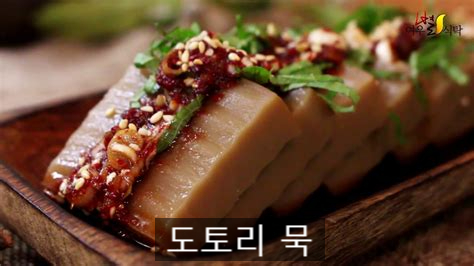In Korea, there is a unique food culture called jelly. It is a food that is made by stirring the powder with a wooden spatula over a low fire so that it does not get crushed, as expressed in the expression “sunda.”
Thank you for reading this post, don't forget to subscribe!
The jelly is made up of starch, and when rice flour and wheat flour are mixed, it becomes a paste. Depending on the content of amylopectin and protein, the properties are different, so the binding force is weak and there is no tension to pull it up, so it spreads to the bottom due to gravity, and even if it is placed on a mold and hardened, the binding force is weak and it falls apart.
In contrast, acorns contain a lot of tannin and starch, which have strong binding forces, so when the moisture is drained, they are fixed on the surface and can maintain their shape.
In addition to these acorns, there are also buckwheat jelly and green bean jelly, all of which have the same properties, and those made with soybeans are called tofu, and those made with seaweed are called agar or konjac, which have similar textures, but are made in separate ways.
For us, these acorns are a food ingredient that we pick up when we climb mountains and eat as jelly, but in foreign countries, they are considered food for animals living in the mountains, and they are said to be unfamiliar as food.
Acorns are the fruit of the zelkova tree. In Korea, where 70% of the mountains are mountainous, they grow on zelkova trees, Japanese maple trees, Mongolian maple trees, and Japanese oak trees, and in the fall, acorns fall on the mountain streams, and they are a valuable food source for squirrels and others in the winter.

Acorn jelly is soft and has a soft texture, so even the elderly with weak teeth can eat it without any problem. It is a delicacy that can be found at restaurants at the entrance of hiking trails when dipped in soy sauce made with sweet potatoes. Also, acorn rice is made by slicing acorn jelly thinly and serving it with rice in soup. It has the unpleasant-sounding name of acorn bowl.
Nutritionalally, acorns have useful ingredients. They are low in calories at about 46 kcal per 100 g and are rich in dietary fiber, making them good for diet food. Tannin removes active oxygen, protects the stomach lining, and inhibits fat absorption. It is also rich in antioxidants such as polyphenol and flavonoid, which help prevent aging and adult diseases.
Acorns also contain a lot of the bitter tannin component that is found in persimmons, so it is said that it can worsen symptoms in people with constipation. Acorns contain some toxic substances along with bioactive substances such as tannin, so they should be soaked in water to remove harmful substances.
Potatoes and sweet potatoes were used as relief crops in preparation for the spring barley harvest, but these acorns were also undoubtedly an ingredient that helped alleviate hunger in the old days.
Discover more from Creative Innovator in Korea
Subscribe to get the latest posts sent to your email.

